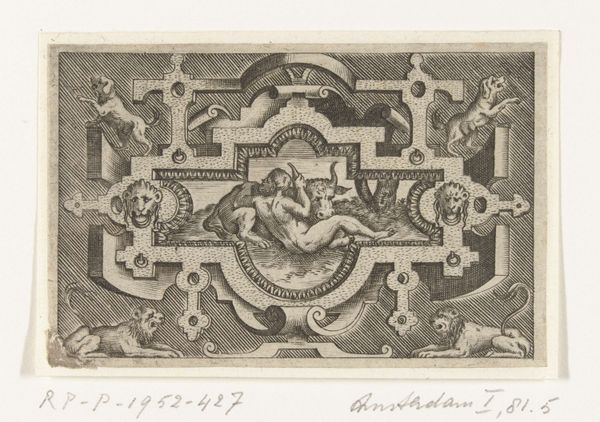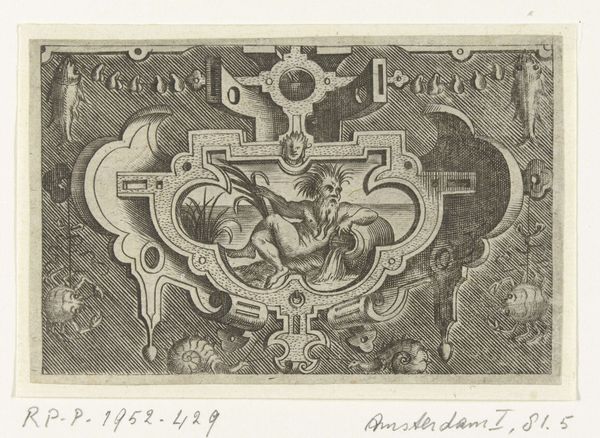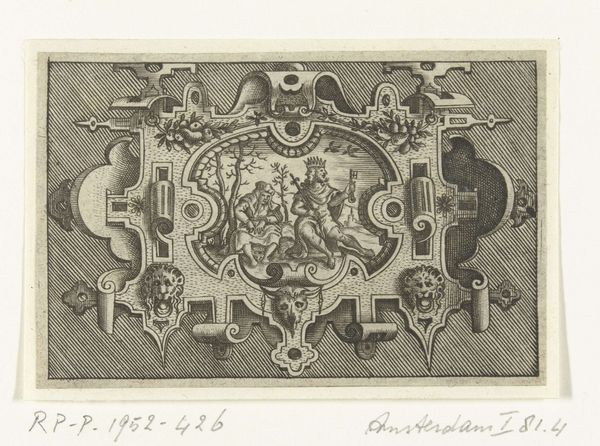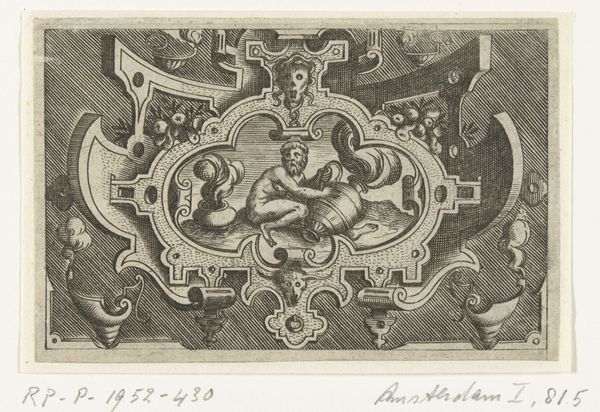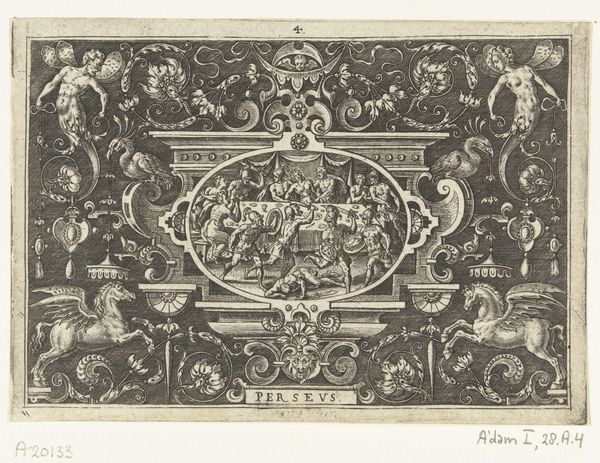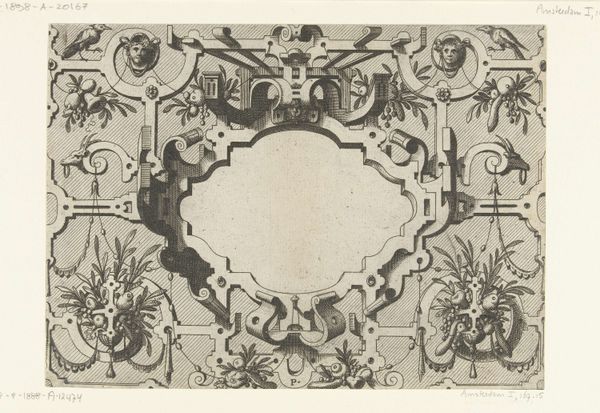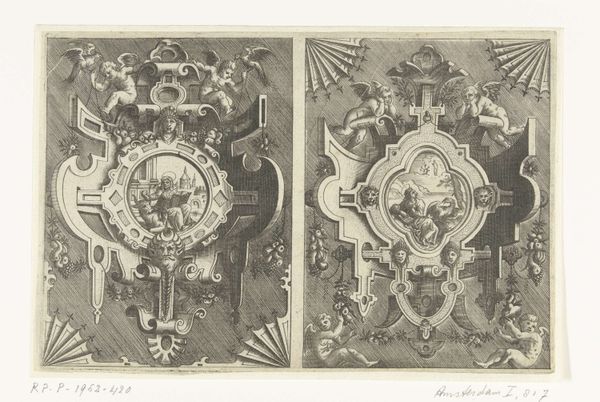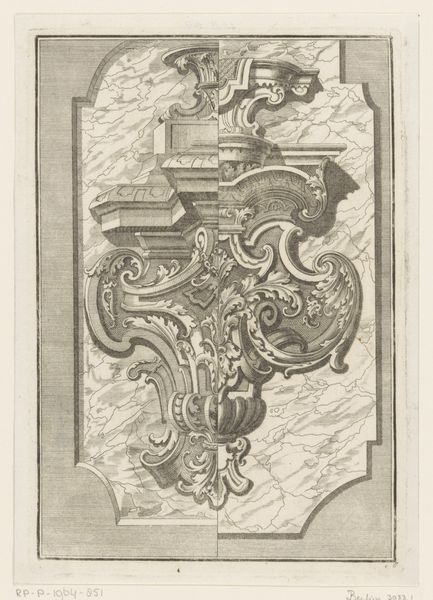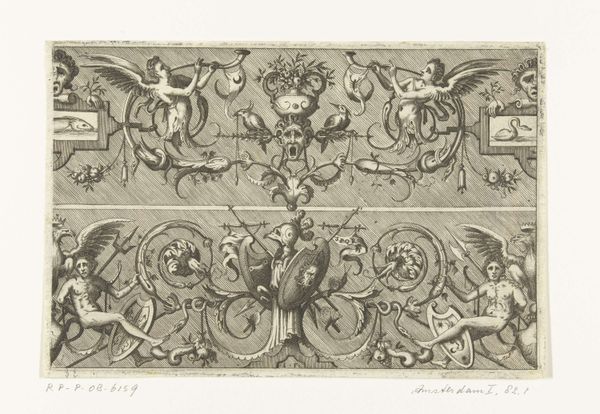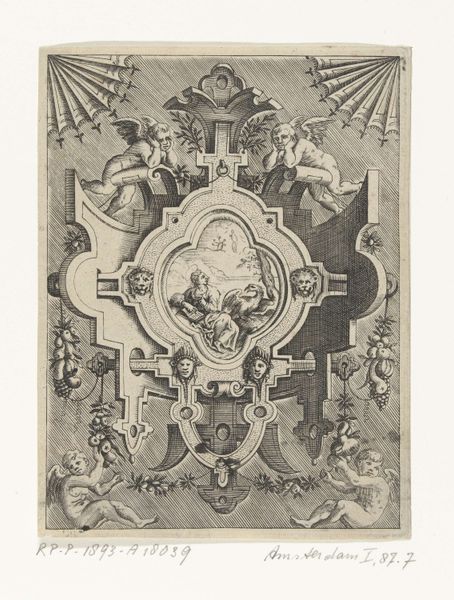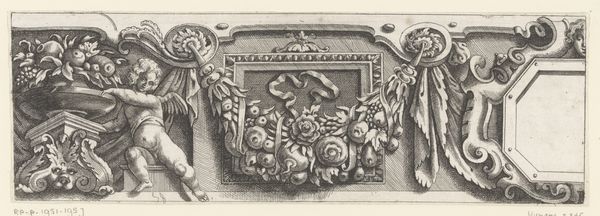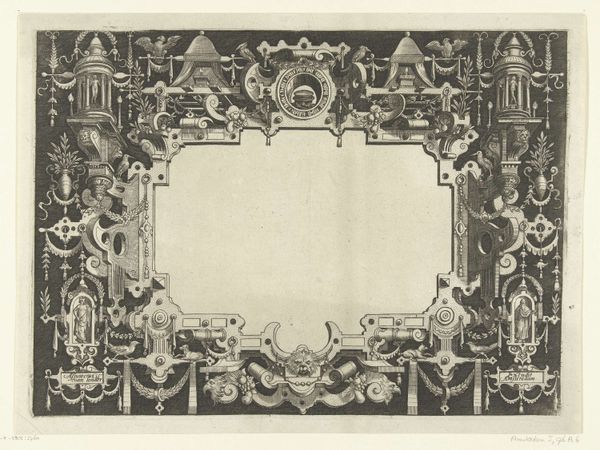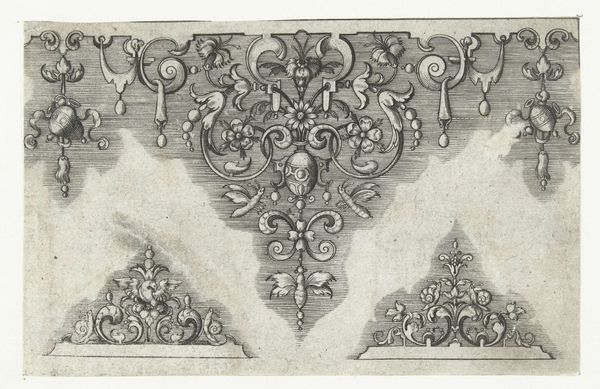
print, engraving
#
allegory
#
pen drawing
# print
#
pen illustration
#
pen sketch
#
old engraving style
#
landscape
#
figuration
#
11_renaissance
#
line
#
northern-renaissance
#
engraving
Dimensions: height 66 mm, width 103 mm
Copyright: Rijks Museum: Open Domain
Curator: Look at this captivating engraving by Pieter van der Heyden from 1566, titled "Voorstellingen van de vier elementen: lucht," or "Representations of the four elements: air." It’s currently held here at the Rijksmuseum. Editor: It’s whimsical. The cherubic figure lounging on a cloud dominates the scene, framed by very stylized ornamentation. There's something almost playfully decorative about the whole arrangement. Curator: Indeed, it speaks to the Northern Renaissance interest in allegory and the natural world. Consider the representation of ‘air’ not just as atmosphere, but also the allegorical implications it holds relating to ideas circulating through the social atmosphere. What ideas are being given the space to breathe? Editor: I'm intrigued by how the engraving tradition contributes to the artwork's political significance. Printmaking allowed for the wide dissemination of imagery. Do you think that played a key role here? I am interested in what groups it was aimed at and who had access. Curator: Precisely! The reproducible nature of engravings meant ideas – visual ideas about elements, the body, the world – could permeate society. Furthermore, prints like this became incorporated into collections, were displayed in households, becoming a form of decor that delivered not merely aesthetic appeal but cultural ideology. Editor: That's fascinating. To bring this back to our present considerations: can we examine the potential impact these widely disseminated images may have had on solidifying socio-political views that still prevail today? Does an appreciation of works such as this enable an art history to critique rather than simply catalogue historical oppression? Curator: It certainly provides us an entry point for just such a necessary examination of visual culture as social commentary. To ignore that potential is a profound mistake. Editor: It’s striking how much socio-cultural context we've unearthed from just a brief look at this seemingly simple design. Curator: And hopefully demonstrated just how vital intersectional understandings are when analyzing any work of art.
Comments
No comments
Be the first to comment and join the conversation on the ultimate creative platform.
